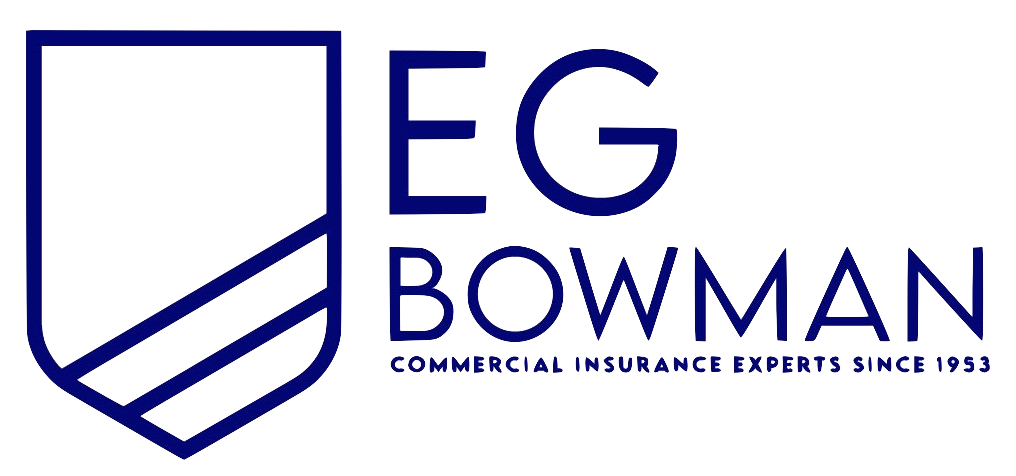New York Errors and Omissions Liability Insurance
See How We're Different:
or Call Us: 212-425-8150

Most Common Business Policies
Index
Understanding Errors and Omissions Liability Insurance
New York's Legal Requirements for Errors and Omissions Insurance
The Process of Getting Errors and Omissions Insurance in New York
Cost of Errors and Omissions Insurance in New York
Claims and Coverage of Errors and Omissions Insurance
Frequently Asked Questions about Errors and Omissions Insurance in New York
Contact Us
Errors and omissions (E&O) liability insurance is an essential aspect of risk management for many professionals in New York. This article aims to provide a comprehensive understanding of E&O insurance, covering its significance, legal requirements, application process, costs, claims, and common concerns. Whether you are a legal professional, consultant, or in another service-oriented field, understanding E&O insurance is crucial for protecting your career and financial wellbeing.
Understanding Errors and Omissions Liability Insurance
Errors and omissions liability insurance, commonly referred to as professional liability insurance, protects professionals against claims of negligence, errors, or omissions that may occur in the course of providing their services. It is especially important for those in fields such as law, accounting, real estate, and consulting, where mistakes can lead to significant financial repercussions for clients. The stakes are high, and professionals in these industries must navigate a complex landscape of regulations and client expectations, making E&O insurance not just a safety net but a critical component of their business strategy.
Definition and Importance of Errors and Omissions Liability Insurance
Errors and omissions insurance is designed to cover legal costs and damages awarded to clients who claim that they were harmed due to a professional's mistake or oversight. This type of insurance is vital for professionals as it safeguards not only their financial assets but also their reputations in the industry. In a world where a single misstep can lead to a lawsuit, having E&O insurance is akin to having a financial shield that allows professionals to operate with confidence.
The importance of E&O insurance cannot be overstated, especially in a litigious society. Even the most conscientious professionals can make mistakes, and without proper coverage, the financial burden of defending against claims can be overwhelming. E&O insurance provides peace of mind, allowing professionals to focus on their work without the incessant worry of potential lawsuits. Moreover, many clients now expect professionals to carry this insurance as a standard practice, making it not only a protective measure but also a competitive advantage in the marketplace.
Key Features of Errors and Omissions Liability Insurance
Several features characterize E&O insurance, making it a tailored solution for professionals:
- Coverage for Legal Expenses: E&O insurance typically covers legal defense costs, even if the claims against you are found to be baseless.
- Liability Coverage Limits: Policies often have limits on coverage, meaning that they will pay up to a specified amount, which professionals must consider when selecting a policy.
- Claims-Made Basis: Most E&O policies operate on a claims-made basis, meaning the insurance is effective if the claim is made during the policy period.
These features underscore the necessity of acquiring adequate coverage to protect against unforeseen claims that could arise from service-related errors or omissions. Additionally, many policies offer optional endorsements that can expand coverage to include things like cyber liability or breach of confidentiality, which are increasingly relevant in today’s digital landscape. This flexibility allows professionals to customize their policies to fit the specific risks associated with their line of work, ensuring comprehensive protection tailored to their unique circumstances.
Furthermore, it’s essential for professionals to regularly review their E&O insurance policies to ensure that their coverage keeps pace with their evolving business practices and the changing legal environment. As industries grow and adapt, so too do the risks associated with them. Regularly updating coverage limits and understanding the nuances of the policy can help mitigate potential gaps in protection, ultimately leading to a more secure professional practice. Engaging with an experienced insurance broker can also provide valuable insights into the best practices for maintaining adequate coverage in an ever-changing landscape.

New York's Legal Requirements for Errors and Omissions Insurance
In New York, certain professions are legally required to carry errors and omissions insurance. Understanding these legal requirements is essential for ensuring compliance and protecting your practice.
Who Needs Errors and Omissions Insurance in New York?
Many professionals are required or strongly recommended to obtain E&O insurance in New York, especially those in fields like:
- Legal Services
- Real Estate
- Financial Services
- Insurance Agents
- Healthcare Providers
While not every profession mandates E&O coverage, obtaining it is prudent. It affects not only regulatory compliance but also enhances client trust and credibility in your services. For instance, in the legal field, attorneys are often required to carry this insurance to protect against claims of negligence or inadequate representation, which can arise from even the smallest oversight. Similarly, real estate agents benefit from E&O insurance as it provides a safety net against potential disputes over property transactions, ensuring that they can operate with peace of mind.
Legal Consequences of Not Having Errors and Omissions Insurance
Failure to secure E&O insurance can lead to severe legal consequences. Professionals without coverage may face:
- Personal Liability: Without insurance, individuals are personally responsible for any legal fees or settlements.
- Loss of Licensure: In some professions, lack of E&O insurance can result in losing the right to practice.
- Increased Litigation Risks: The absence of insurance may encourage clients to pursue claims, knowing that the professional has no financial protection.
Moreover, the repercussions of not having E&O insurance extend beyond immediate legal troubles. Professionals may find it challenging to secure contracts or partnerships, as many clients and businesses prefer to work with insured individuals to mitigate risks. Additionally, the financial strain of defending against a lawsuit without insurance can be crippling, leading to potential bankruptcy or severe damage to one's professional reputation. Maintaining compliance with New York’s legal requirements for E&O insurance is not only a safeguard for you but also reinforces the integrity of your profession.
The Process of Getting Errors and Omissions Insurance in New York
Acquiring errors and omissions insurance involves several steps that require careful consideration and evaluation to ensure you obtain the right coverage for your needs.
Choosing the Right Insurance Provider
Selecting the appropriate insurance provider is a critical step. Here are some key factors to consider:
- Reputation: Look for providers with strong industry reputations and customer reviews.
- Coverage Options: Assess whether the provider offers customizable coverage that suits your specific professional needs.
- Claims Handling: Investigate how the provider manages claims, as prompt and efficient support is vital in case you need to file a claim.
Doing thorough research ensures that you choose an insurance provider that aligns with your professional goals and expectations. Additionally, consider reaching out to colleagues or industry associations for recommendations, as firsthand experiences can provide valuable insights into the reliability and service quality of various insurers. Networking within your professional community can also reveal any common pitfalls to avoid, ensuring that you make a well-informed decision.
Understanding Your Insurance Policy
Once you’ve selected a provider, it’s crucial to thoroughly understand the policy you are purchasing. Pay attention to:
- Coverage Limitations: Be aware of any exclusions in the policy that may affect your protection.
- Premium Rates: Understand how premiums are calculated and the factors influencing your rates.
- Renewal Terms: Familiarize yourself with the renewal process and whether rates may change over time.
Having a clear understanding of your policy enhances your protection and ensures you are adequately covered against potential risks. Moreover, consider consulting with an insurance broker who specializes in errors and omissions coverage. They can provide expert guidance on the nuances of different policies, helping you navigate complex terms and conditions. This additional layer of support can be invaluable, especially for professionals in fields with unique risks, such as real estate or consulting, where the stakes are particularly high and the implications of errors can be significant.
Cost of Errors and Omissions Insurance in New York
The cost of errors and omissions insurance can vary widely based on several factors. Understanding these factors can help professionals estimate their insurance expenses and plan accordingly.
Factors Affecting the Cost of Insurance
Several elements influence the cost of E&O insurance in New York:
- Industry Type: Different professions exhibit varying risk levels, impacting premium costs.
- Claims History: A history of multiple claims can lead to higher premiums.
- Coverage Amount: Choosing higher coverage limits typically results in increased costs.
Understanding these factors allows professionals to strategize their insurance selections while balancing coverage needs and costs. For instance, professionals in high-risk fields such as real estate or financial consulting may face steeper premiums due to the nature of their work. Conversely, those in lower-risk industries might find more affordable options. Additionally, the geographical location within New York can also play a role, as urban areas may have different risk assessments compared to rural settings.
Tips to Lower Your Insurance Premium
Reducing insurance premiums without compromising coverage is a concern for many professionals. Here are some effective strategies:
- Increase Deductibles: Opting for a higher deductible can lower your premium costs, although it increases out-of-pocket expenses during a claim.
- Bundle Policies: Consider bundling your E&O insurance with other liability policies for potential discounts.
- Maintain a Clean Record: Focusing on risk management and maintaining a clean claims history can lead to more favorable premiums.
Implementing these strategies can contribute to effective financial planning for insurance coverage. Additionally, engaging in regular training and professional development can enhance your skills and knowledge, thereby reducing the likelihood of errors that could lead to claims. Many insurance providers also offer discounts for professionals who participate in risk management programs or who can demonstrate a commitment to maintaining high standards of practice. By taking proactive steps, you not only protect your business but also potentially save on your insurance costs in the long run.

Claims and Coverage of Errors and Omissions Insurance
Understanding the claims process and what E&O insurance covers is essential for professionals who seek to minimize risk exposure. This knowledge not only empowers individuals to protect their businesses but also fosters a sense of security that is vital in today's competitive landscape. With the potential for costly legal battles looming, having a solid grasp of your coverage can be a game-changer.
What Does Errors and Omissions Insurance Cover?
E&O insurance typically covers the following:
- Miscalculations: Errors made during calculations or assessments.
- Negligent Professional Advice: Claims resulting from advice that leads to financial harm.
- Omissions: Failures to disclose important information or provide necessary services.
Understanding what your policy covers helps ensure you are adequately prepared in case of any claims. Additionally, many policies may also include coverage for legal defense costs, which can be substantial in the event of a lawsuit. This aspect is particularly crucial, as defending against claims can drain both financial and emotional resources, making it imperative for professionals to have robust coverage that addresses these potential expenses.
How to File a Claim for Errors and Omissions Insurance
Filing a claim can seem daunting, but following a structured process can ease the procedure. Here are steps to guide you:
- Notify Your Insurer: As soon as you suspect a claim, contact your insurance provider immediately.
- Document Everything: Gather all relevant documentation related to the claim, including communications and service agreements.
- Work with an Adjuster: Your insurer will likely assign an adjuster to evaluate the claim and coordinate the investigation.
- Follow Up: Stay in communication with your insurance provider throughout the process to remain informed.
Having a clear understanding of the claims process helps professionals navigate challenging situations more effectively. It's also beneficial to familiarize yourself with the specific terms and conditions of your policy, as these can vary significantly between providers. Being proactive in understanding your coverage can not only streamline the claims process but also enhance your overall risk management strategy. Moreover, consider consulting with a legal professional who specializes in insurance claims to ensure that you are fully prepared and informed about your rights and responsibilities during this process.
Frequently Asked Questions about Errors and Omissions Insurance in New York
This section addresses some of the most common questions related to errors and omissions insurance, offering insightful answers for professionals seeking clarity.
Common Misconceptions about Errors and Omissions Insurance
One prevalent misconception is that only large firms require E&O insurance. In reality, professionals of all sizes and fields can benefit from this type of coverage. Another misunderstanding is that E&O insurance covers all facets of professional liability; however, there are specific exclusions that one must be aware of.
Addressing these misconceptions is vital for professionals to make informed decisions when it comes to securing adequate insurance coverage. For instance, freelancers and independent contractors often underestimate their exposure to liability risks, believing that their small scale makes them less likely to face claims. However, even a single error in judgment or oversight can lead to significant financial repercussions. Understanding that E&O insurance is not just for large corporations but also for individuals in various professions—such as consultants, real estate agents, and IT professionals—can help mitigate potential risks effectively.
Expert Advice on Errors and Omissions Insurance
Consulting with an insurance expert can provide tailored advice pertinent to individual circumstances. Experts can help break down the complexities of E&O insurance, ensuring you understand all aspects of your coverage and requirements. They can guide you through the nuances of policy limits, deductibles, and the specific types of claims that are covered under your plan.
Additionally, staying updated with industry changes and regulatory requirements can inform your insurance strategies and empower you to mitigate risks effectively. Always consider engaging with professionals who specialize in E&O insurance for personalized guidance. These specialists can not only assist with selecting the right policy but also help you develop best practices to minimize the likelihood of claims. They can provide insights into risk management strategies, such as maintaining thorough documentation and implementing quality control measures, which can further safeguard your professional reputation and financial stability.
Errors and omissions liability insurance is a critical asset for New York professionals. Understanding its importance, navigating the legal landscape, and making informed decisions around coverage can protect both your career and financial future.
